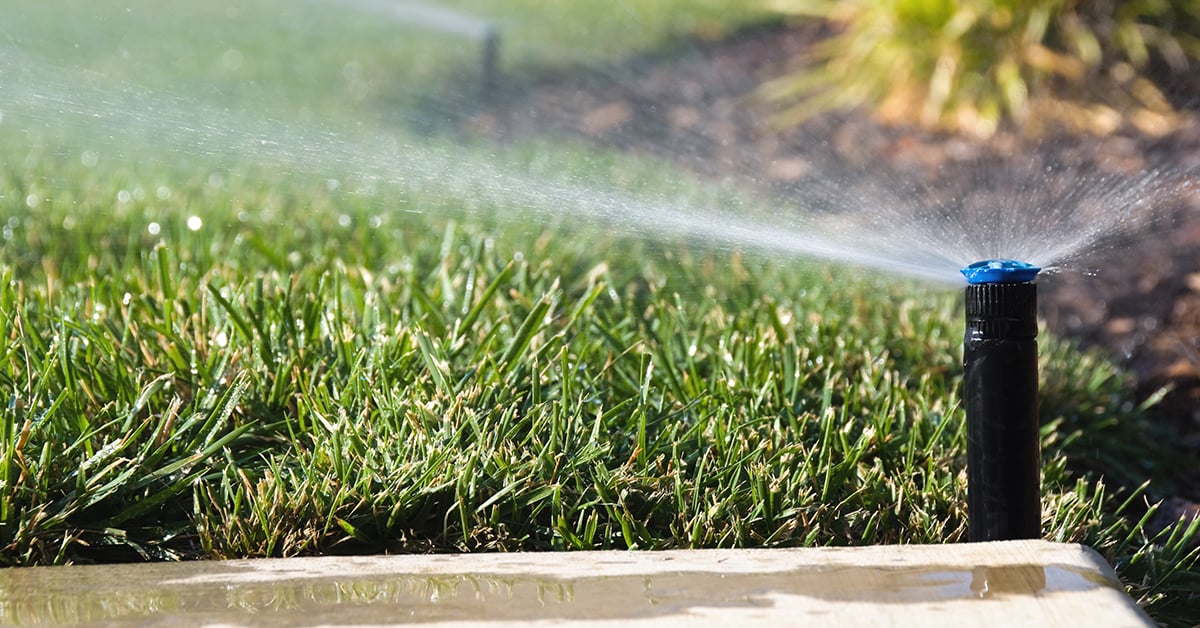Water pressure and flow
Water flow
Your water flow calculation (GPM) will enable you to determine the number of sprinkler heads you can run simultaneously.
- Place a one-gallon container under an outdoor faucet.
- Time the number of minutes required to fill the container.
- Divide the time result into 60, which is your GPM calculation.
For example, if it takes 20 seconds to fill the gallon container: 60 divided by 20 = 3, which means your water flow rate is 3 GPM.
You can also determine the volume of water available for your system (GPM) using your PSI calculations and the size of the main water service line.
Water pressure
To check your water pressure, hook up a pressure gauge to your outdoor faucet (make sure that no other water is flowing inside the home).
Turn on the faucet and record the PSI reading.
Main water service line (from the city main to the house):
- Wrap a piece of string around the pipe.
- Measure the string.
- Determine the diameter using the table below.
Length of String | 2" | 2-3/4" | 3-1/4" | 3-1/2" | 4-1/4" |
Copper pipe size | 1/2" | 3/4" | 1" | ||
PVC or galvanized pipe size | 1/2" | 3/4" | 1" |
Length of String | 2" | 2-3/4" | 3-1/4" | 3-1/2" | 4-1/4" |
Copper pipe size | 1/2" | 3/4" | 1" | ||
PVC or galvanized pipe size | 1/2" | 3/4" | 1" |
System capacity
Water Pressure (PSI)
Main line size | 35 lbs. | 40 lbs. | 45 lbs. | 50 lbs. | 55 lbs. | 60 lbs. | 65 lbs. | 70 lbs. | 75 lbs. |
½" | 3.5 | 5.0 | 6.0 | 6.5 | 7.0 | 7.5 | 8.0 | 9.0 | 9.5 |
¾" | 7.5 | 9.0 | 10.0 | 12.0 | 13.0 | 14.0 | 15.0 | 16.0 | 17.5 |
1" | 10.0 | 11.5 | 13.5 | 15.0 | 16.0 | 17.5 | 18.5 | 20.0 | 21.0 |
Main line size | 35 lbs. | 40 lbs. | 45 lbs. | 50 lbs. | 55 lbs. | 60 lbs. | 65 lbs. | 70 lbs. | 75 lbs. |
½" | 3.5 | 5.0 | 6.0 | 6.5 | 7.0 | 7.5 | 8.0 | 9.0 | 9.5 |
¾" | 7.5 | 9.0 | 10.0 | 12.0 | 13.0 | 14.0 | 15.0 | 16.0 | 17.5 |
1" | 10.0 | 11.5 | 13.5 | 15.0 | 16.0 | 17.5 | 18.5 | 20.0 | 21.0 |














